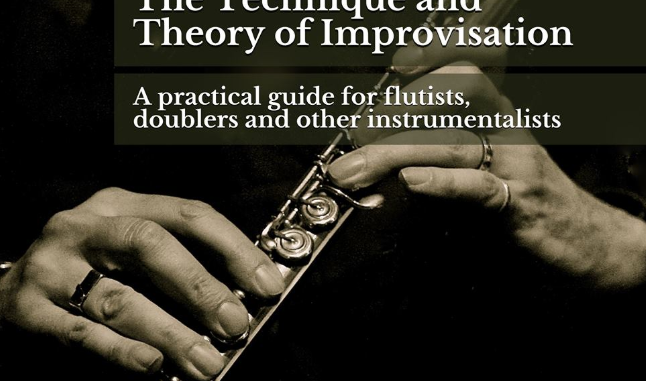
Despite the fact that Bill McBirnie’s primary musical instrument is flute, his book The Technique and Theory of Improvisation offers tremendous values to musicians of various types. His dual motivations for writing the book focus on providing guidance for flute players working outside classical traditions and clarifying a pedagogically sound approach to improvisation rather obfuscating the subject like current literature on the subject does. The second of those motivations is especially crucial – this is where the book’s scope expands far beyond the purview of McBirnie’s chosen instrument. Even novice musicians can read this book and glean important guidance – they may find themselves, if nothing else, responding to the obvious passion McBirnie has for his art. The text of this book often reads as if it is alight with joy.
ABOUT THE AUTHOR: www.extremeflute.com/
McBirnie covers the fundamentals and intangibles alike. There are some talents a quality musician is born with you cannot teach, but the fundamentals underlying concepts like technique and theory demand mastering or, at least, understanding before a musician can begin venturing far afield of the charts and sheet music in hopes of striking artistic gold. To put it bluntly, you have to know the rules before you can break them. McBirnie provides readers with a blueprint for how this is possible throughout the book and does so in systematic but never boring fashion. You heed his lessons for a variety of reasons; his history and reputation precede him, but McBirnie also knows how to lay out his knowledge in such a way that it inspires your own confidence. He cuts intimidating propositions down to manageable size
He includes a variety of listening suggestions, chord charts, lists, and snippets of sheet music throughout the text. They never overshadow his writing and balance out with the exposition in such a way they add an immeasurable amount of value to the book. McBirnie summarizes the contents to great effect near the book’s end and appendixes coming after the conclusion of the book’s main body reference important secondary material and other considerations for aspiring and practicing musicians. It is quite impressive how much knowledge McBirnie packs into a relatively limited length and it illustrates his writing and instructional talents alike.
AMAZON: www.amazon.com/Technique-Theory-Improvisation-practical-instrumentalists/dp/1999227301
Some music reference books seize upon fleeting movements in the art or else gloss over their subject matter in such a desultory way they achieve irrelevance within a few years. That isn’t the case with Bill McBirnie’s The Technique and Theory of Improvisation. McBirnie has written a brief but enduring work that ranks as one of the best contributions to music literature published in recent memory and his storied résumé backs him up every step of the way. This is a book capable of enduring indefinitely and gaining even more luster over time. Musicians will consult and return to this book for years to come incorporating its lessons and heeding its guidance. I can’t think of many finer testaments to an artist’s legacy than setting the table for those who will follow in their footsteps or, in this case, musical notes.
Clay Burton
